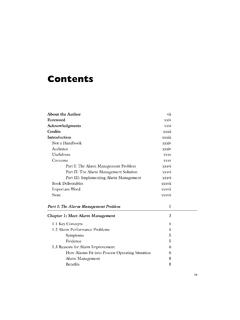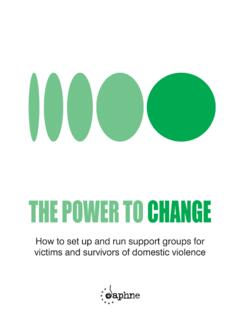Transcription of Professional Development 101: The Basics
1 1 Professional Development 101: The Basics Full Course Content Contents CHAPTER 1 INTRODUCTION .. 3 WELCOME .. 3 WHAT IS Professional Development ? .. 3 CHAPTER 2 Professional Development OFFERINGS .. 4 OFFERINGS .. 4 TYPES OF OFFERINGS .. 4 TECHNICAL ASSISTANCE .. 5 DISTANCE LEARNING .. 6 ACTIVITY 1: Professional Development 6 QUESTIONS .. 6 ANSWERS .. 7 CHAPTER 3 Professional Development PRACTICES .. 8 OVERVIEW OF THE Professional Development 8 PARTNERSHIPS AND POTENTIAL OUTCOMES .. 8 ACTIVITY 2: PD PRACTICES FRAMEWORK AND PARTNERSHIP OUTCOMES .. 9 QUESTIONS .. 9 ANSWERS .. 9 PD PRACTICE #1: SUSTAIN .. 10 PD PRACTICE #2: DESIGN .. 11 PD PRACTICE #3: PROMOTE .. 12 ACTIVITY 3: SUSTAIN, DESIGN, AND PROMOTE PD PRACTICES .. 13 QUESTIONS.
2 13 ANSWERS .. 13 PD PRACTICE #4: DELIVER .. 14 PD PRACTICE #5: FOLLOW UP .. 15 PD PRACTICE #6: EVALUATE .. 17 ACTIVITY 4: DELIVER, FOLLOW UP, AND EVALUATE PD PRACTICES .. 18 2 QUESTIONS .. 18 ANSWERS .. 19 CHAPTER 4 CONCLUSION .. 19 SUMMARY AND WRAP-UP .. 19 ACTIVITY 5: MY PROFRESSIONAL Development PRACTICES READINESS .. 20 3 CHAPTER 1 INTRODUCTION WELCOME Welcome to Professional Development 101: The Basics , the first course in the Professional Development series. To navigate through this course, click through each section and watch the videos. We strongly recommend that you view the entire course in sequential order to get the most out of the content. You should plan on spending about 60 minutes to complete this course. In this course, you will learn about the six Professional Development Practices developed by the Centers for Disease Control and Prevention s Healthy Schools branch, in partnership with Rocky Mountain Center for Health Promotion and Education, or RMC Health.
3 The Professional Development Practices can help increase your skill-building capacity in improving health and educational outcomes among youth. The objectives for this course are to: 1. Define Professional Development and key Professional Development terms. 2. Identify the six Professional Development practices. 3. Identify strategies to support the Professional Development practices. Throughout the course, you ll have opportunities to review, test your knowledge, and get more information. WHAT IS Professional Development ? Professional Development , commonly referred to as PD, is a systematic process that strengthens how professionals obtain and retain knowledge, skills, and attitudes. PD doesn t happen by chance. In order to improve organizational practices, you must consciously design PD processes and content with your organization s goals in mind.
4 Professional Development should leverage adult learning principles to engage learners. That means following a systematic process that includes sustaining, designing, promoting, delivering, following up, and evaluating. Offerings should be designed so that: Participants feel respected. The learning environment is safe and supportive. The content is relevant to participants needs. Learning offerings are varied to address the needs of a diverse audience. Participants have opportunities to practice skills and apply new knowledge. For more information about adult learning principles, theories, and learning styles, see the next course in the series, Professional Development 201: From Basic to Dynamic. 4 CHAPTER 2 Professional Development OFFERINGS OFFERINGS A Professional Development offering is a set of skill-building events designed to assist individuals in obtaining new knowledge and skills.
5 PD offerings seek to accomplish specific objectives and improve workplace performance. Offerings: Are targeted to a specific audience, Are centered on the learner, and Provide a call to action. PD can be grouped into offering categories that are best suited for different goals and circumstances. Consider your specific needs and resources to decide what type of PD is most appropriate. Is it expected that the PD take place during a single event, or will it be more of a continuous process over a longer period of time? If it is a continuous process, then technical assistance may be the appropriate PD approach. If it should be a single event, then you need to determine if it should be shorter or longer than three hours, based on the content.
6 O If shorter than three hours, it will be an information session, such as a webinar. o If the content calls for an event to be longer than three hours, a training or workshop may be the appropriate PD approach. If the goal is to help a small group learn and practice sustainable, long-term skills, then a workshop is appropriate. If the goal is to help a group (especially larger groups) learn skills for immediate application, then training is appropriate. Once you ve determined the type of PD for the situation, you will need to decide if it is best to deliver the PD in-person, remotely (distance learning), or a mix of both. We ll now look at each of these types of offerings in more detail. TYPES OF OFFERINGS The terms training and workshops are often used interchangeably.
7 However, there are differences between training and workshops. Training is an instructional experience provided primarily by employers for employees. Training can be provided to a large group of people at the same time. It is designed to develop new skills and knowledge that are expected to be applied immediately on the job. Workshops are educational programs for a small group of people that focuses on techniques and skills in a particular field. Participants gain long-term benefits, such as sustainable skills. 5 A third type of event, one that incorporates characteristics of both training and workshops, is the Training of Trainers (ToT) model. The ToT model engages master trainers in creating new trainers for a particular topic or skill, or with training in general.
8 The main goal of the ToT model is to prepare instructors to present information effectively, respond to participant questions, and lead activities that reinforce learning. Information and Presentation Sessions Another type of PD offering is information and presentation sessions. These sessions are also tailored to specific audiences, but their purpose is to provide a familiarity level of knowledge on a specific topic. At the end of the session, participants have enough information to decide whether or not to pursue further investigation or implementation of the topic. Information and presentation sessions can be delivered in a variety of ways: in person, online, or in paper-based formats. Sessions can be one-time events or a series of events.
9 They are delivered in a short amount of time, usually between 30 minutes and an hour, but not more than three hours. Webinars are a common example of information or presentation sessions. We will discuss webinars in more detail in the next course, Professional Development -201: From Basic to Dynamic. TECHNICAL ASSISTANCE The last PD offering we will define is technical assistance. Technical assistance, also known as TA and commonly referred to as consulting, is the process of providing targeted support to an organization with a Development need or problem. It is an effective method for building the capacity of an organization. TA involves communication between a specialist or consultant and the organization. The specialist should be aware of the organizational culture and any specific circumstances related to the Development need.
10 TA is also typically delivered over an extended period of time. In order for technical assistance to be effective, the specialist or consultant should adhere to a set of core principles. Effective TA should be: Collaborative. Work jointly with the organization s staff to identify underlying needs. Systematic. Use an orderly approach. Targeted. Determine where technical assistance will have the greatest impact. Adaptive. Be flexible. Customized. Respond to the unique needs of the organization. Results-driven. Identify measures that indicate improvement. The structure of how technical assistance is delivered varies. It can be one-on-one consultation or small-group facilitation (also known as coaching or mentoring). TA can be provided in person or by phone, e-mail, or other online methods such as Web-conferencing.













